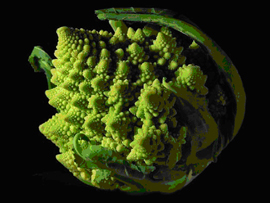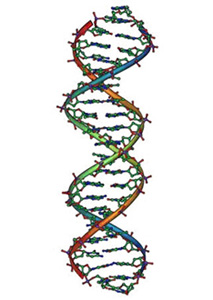
Home > Archive > Recipes & articles > Trellis: Blogging for ideas > The challenge
![]()
![]()
The intrinsic desire to capture, sustain, and transfer knowledge is a core characteristic of our human behavior. Our fascination with knowledge is clearly evident in how, as a species, we have collected and compiled a record of our growth, which we call history.
History is comprised of the knowledge of those who have come before us, and often reveals new ideas as combinations of new and pre-existing knowledge. By paying careful attention to history, we can collectively learn from both the mistakes and successes of others.
In the scientific environment, knowledge is defined as combination of experience, ancillary information, insight, and standards that provide a foundation for assessing and assimilating new experiences and information. Knowledge is also seen as existing in two forms: tacit and explicit. Tacit knowledge exists subconsciously, often without the individual being actively aware of its presence, while explicit knowledge exists actively and may be more easily communicated or understood.
Knowledge and technology are tied together by symbiotic relationships. In the field of medicine, for example, the increased understanding of the human body has led to both curing and preventing the spread of diseases that would have ravaged past civilizations.
![]()
Definitions are formal descriptions of an object. They attempt to compress knowledge and reduce the size of a description by grouping together similar traits. Optimum compression yields the perfect balance of size to density. Nature tends to be quite good at this, as is demonstrated in the structure of Romanesco Broccoli, which uses a spiral to compress its form into a beautiful result:


Grouped sets of definitions form vocabularies. As knowledge evolves, new vocabularies are formed to describe it. Vocabularies are necessary for describing new technology and thus are an integral part of the ideation process. Such is the case with the modern field of genetics, budding from Mendel’s study of inheritance in pea plants. Future research in genetics will continue to simplify the understanding of the human body, spawning new research and developing new vocabularies for describing its function.

Language development reflects a high level of organization applied to a specific body of knowledge. Through the application of different vocabularies, language further compresses knowledge and encodes it within a streaming format for exchange.
Nature offers an excellent example in a pattern that defines the structure and function of living organisms. DNA compresses the knowledge required to build living things within a vocabulary defined by combinations of four different nucleotides. This compression forms a beautifully succinct, high-density structure:

![]()
Interfaces facilitate the transfer of knowledge through a delicate and tedious process of decompression, interpretation, and reconstitution. A successful interface delegates knowledge quickly and with great accuracy, while handling the unexpected events known as errors. Errors occur when knowledge cannot be interpreted, often as a result of incomplete descriptions or faulty organization.
The human body transfers description through a set of specialized interfaces: the senses. Each sense has its own language and subsequent vocabulary. For example, vision may be interpreted through languages of color, form, and balance, while taste with salty, sweet, bitter, and sour. These interfaces compress, encode, and transfer information at great speed and resolution, allowing instantaneous response to multiple stimuli.
![]()
Creativity is usually described as a process that enables the generation of new ideas through the combination of existing ones into new and useful concepts. Creativity is divided in three types: normative, exploratory, and serendipitous.
- Normative creativity forms ideas to solve a fixed set of problems and objectives. The pre-defined nature of normative creativity is generally efficient, yet it has a tendency to limit creative output.
- Exploratory creativity generates a wider array of ideas that may not be related to known design requirements. It differs from normative creativity in that it does not focus on using pre-determined answers to known problems. Exploratory creativity may not always generate viable ideas, but its scope can highlight concepts and ideas that lead to another solution.
- Serendipitous creativity occurs when an idea is discovered or an innovation is made by accident. This is often the result of dealing with a problem and yet being unable to find a proper solution by analytical means alone. This kind of immersion is considered an important factor for gaining creative insight.
![]()
The creative process is thought to be based on a series of deliberations about interdependent decisions that lead to design solutions. The creative process calls upon the collection and organization of knowledge into a mental model, which can then be used to develop new ideas. The proper employment of this mental model can bring about creative insight.
Creative action begins with research, which is later compiled and indexed. This material incubates within the unconscious mind of the creator, finally presenting the conscious mind with creative ideas. The ideas are then shaped and finally developed into a finished product. This way of reaching maturity has a recursive aspect, as each stage of the process requires information to be fed from a preceding operation.
![]()
![]()
Paper was one of the first technologies to facilitate knowledge development and revolutionized the way information was stored. Paper vastly improved upon the time-proven techniques of carving rocks or painting cave walls. Its simplicity, low cost, and availability made it a logical medium for recording information. Eventually, paper was easily organized into stacks and placed within files, or collected and bound to form books.
Yet, as the idea management process became increasingly complex, paper-based approaches revealed their inefficiencies. Being a physical media, there was no separation between the data and the media. This lack of separation made information more difficult and cumbersome to index.
When collected in copious quantities, paper poses another challenge. Although an individual piece of paper occupies a small amount of space, an abundance of paper can be quite unwieldy. While records management solutions readily exist, these strategies generally optimize the physical storage of paper, while leaving the actual information in a static form.
![]()
Software-based approaches to idea management are generally more flexible than their paper-based counterparts. Using a virtual environment, software can quickly and dynamically manipulate and organize large amounts information, while modeling creative and organizational processes.
![]()
Distributed approaches to idea management create networks that connect people in order to collect and index information. These methods support the gathering of knowledge by establishing frameworks for its subsequent description and organization. Similar to software-based approaches, the distributed model reinterprets existing idea development methods for the digital realm. Its core advantage is connectivity, allowing ideas to be managed in real time on a global scale.
While the Internet mimics the paper’s utility, it’s much more than a medium for storing knowledge. Its true innovation is in its ability to provide a global network for distributing and organizing information. As with any technological advance, current modes of thinking and problem solving are first replicated in the new technology, after which new approaches evolve that take greater advantage of the pioneering features offered by the technology.
The solution presented in this article tackles idea management in a web-based, distributed manner. Rather than developing a system from the ground up, Trellis investigates the ways in which blogging, a technology that supports web-based journaling, can be used to assist the development of ideas.


